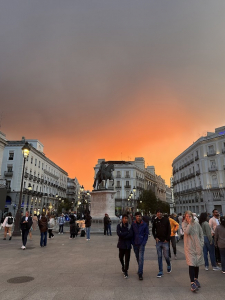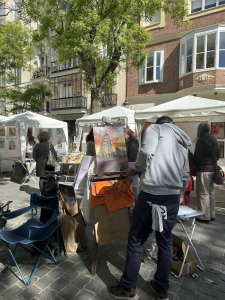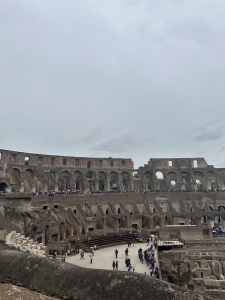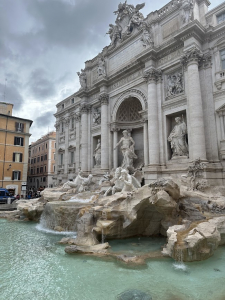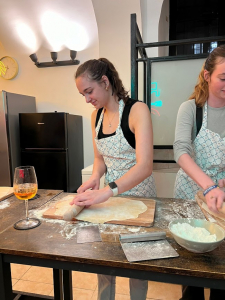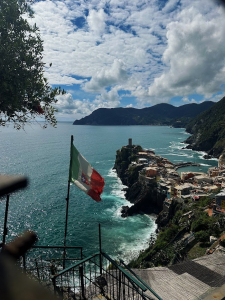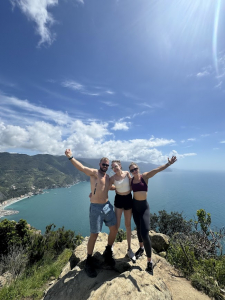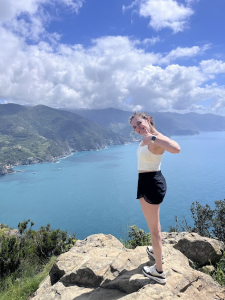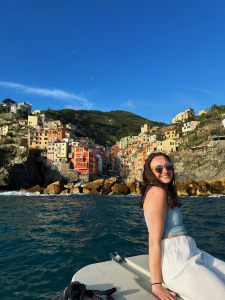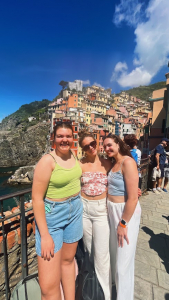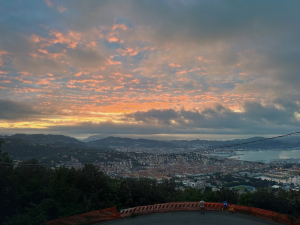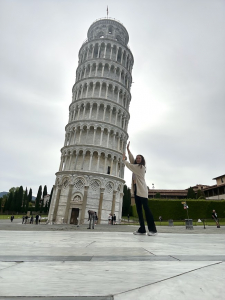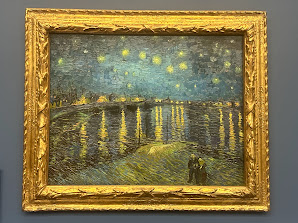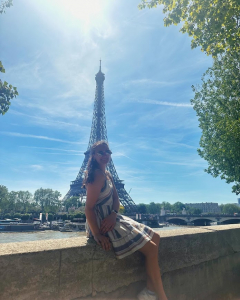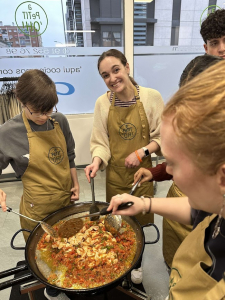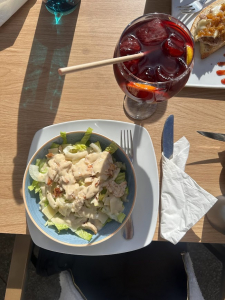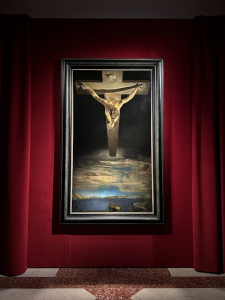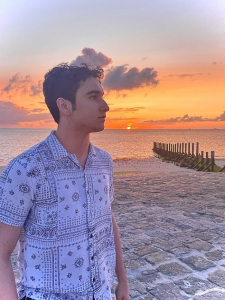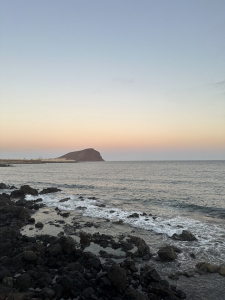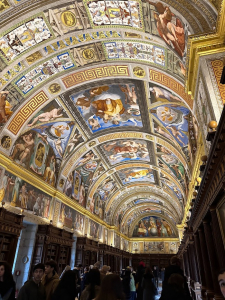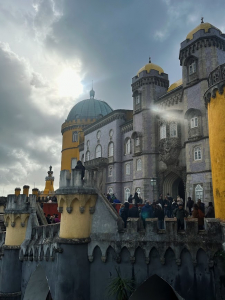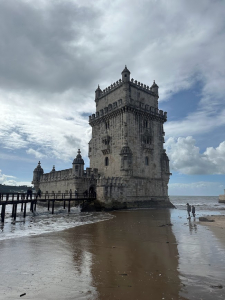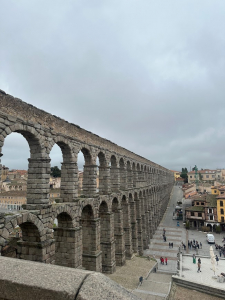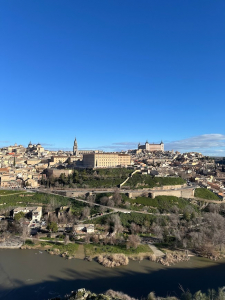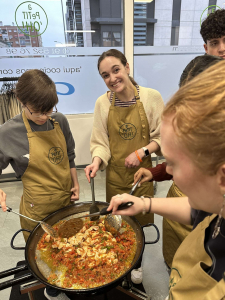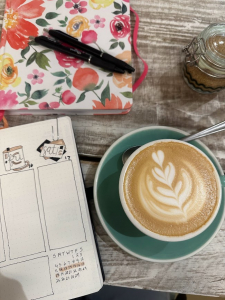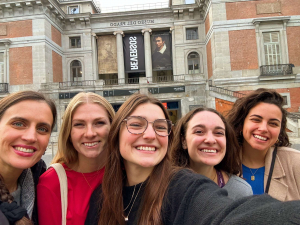“Lo que quieres” means “whatever you want.” Our topic for this blog entry is whatever we want it to be about. Honestly, I think this is more difficult than having a topic assigned. I like to know the end goal, especially when it’s an “assignment.”
I’ve had the opportunity to do “lo que quiero” while studying abroad in Spain. One of the most outstanding, in my opinion, is the ability to travel. I’ve mentioned a few places in former entries, but I’m going to take some time to further detail the places I’ve been blessed to visit.
February 10 – Toledo, Spain
This was a day trip put on by our study-abroad program. We took a bus there and started the day with a tour from the bus. We drove around the outside of the city, admiring the huge walls protecting it. We visited el Ministerio de San Juan de los Reyes, la Sinogaga de Santa Maria La Blanca, la Iglesia de Santo Tome, and el Catedral de Toledo. In the Church of Saint Thomas, we saw El Greco’s famous painting, “The Burial of the Count of Orgaz.” I also enjoyed visiting the cathedral, which is still in use, and finding the “secret” entrances up to the 3 large organs.
February 16 – Segovia, Spain
This was another day trip, but I only went with Alaina and Sarah this time. We took the bus there, and our first stop was los acueductos, which are amazing to think about historically. We wandered the streets, and Alaina and I found a bookstore of a former host-dad. When we visited Spain about 5 years ago, the dad of our host family showed us his bookstore, and after all this time, we could find it again. Unfortunately, it was closed when we walked past it. Our next stop was at an adorable bakery for a snack on the way to Plaza Mayor, where el Catedral de Segovia is located. Our tour of the cathedral took us up 190 steps to the top of the bell tower. From there, we saw breathtaking views of the Alcazar, the mountains, and the villages. After the tour and lunch, we visited the Alcazar, which inspired Cinderella’s castle in the Disney movie. We climbed the tower here and admired the views once again. We splurged on some churros with chocolate and walked along the wall to admire the sunset.
February 22-25 – Lisbon and Sintra, Portugal
Technically, our trip to Portugal started on Thursday the 22nd, but we only rode a bus for 8 hours, so there was little to share. When we woke up in our hostel on Friday, we were greeted by a rainbow outside our window. It rained on and off during the morning but eventually cleared up. The morning highlight was the viewpoint of Santa Luiza. From there we walked to see the outside of the cathedral. We sprinted through the rain to the Time Out Market and got lunch at Janis cafe. We took a train to the neighborhood of Belen to see el Torre de Belen, a beautiful castle right on the beach. (This was my favorite part of the afternoon.) We also took the historic Tram 28 to see the main sights of Lisbon. Next, we went to el Convento de Carmen. We trekked up a never-ending hill to the viewpoint of Senhora de Monte. We could see beautiful colors in the sunset before the clouds covered it. A little fun note: our waiter at the restaurant we went to for dinner was from Argentina, so we all got to talk with him about that from our time studying there.
The next day we had a trip to the nearby town of Sintra. We traveled with a few other adults from the States and made some new friends. Miguel, our guide, took us to the “downtown” area and then up to the Quinta de Regaleira, a beautiful palace with a castle and lots of greenery. We explored the gardens and went inside the caves and the well. Next, we drove to Cabo de Roca, the westernmost part of Europe (contiguously, I believe). The view of the ocean was breathtaking as we climbed on the rocky shore. After lunch, we went to Pena Palace, a colorful building influenced by 5 different countries’ styles. And Sunday was another 8 hours on the bus.
March 2-3 – Salamanca, Spain
We stopped at El Escorial de San Lorenzo on the bus ride to Salamanca. This trip through ISA provided us with a monastery tour, followed by some free time to explore the area and get lunch. We would’ve explored more if the weather wasn’t rainy and cold. We drove the rest of the way to the hotel and had the night to explore the area.
The following day, we had a tour of the University of Salamanca, the oldest university in Spain and one of the oldest in Europe. After that, I visited the Museo Art Nouveau, which had some fantastic modern art. After a little more free time, we took the bus back to Madrid.
March 15-17 – Tenerife, Canary Islands, Spain
On Friday the 15, Alaina, Sarah, and I flew to the south of Tenerife. We took a taxi to a nearby town to get some groceries, but from there, we had to walk in the hot weather to the hostel. We couldn’t check in right away, so we left our stuff and went to the beach, a 5 minute walk away. We were there for a little over an hour before coming back. We made some dinner and returned to the beach to catch the sunset.
The next day, we walked into the town to get some brunch. We walked along the wall by the beach until we found a little entrance to climb down the rocks. We spent some time in this swimming area before returning to our hostel. We found the natural pools and swam around there for a little less than an hour. We finished walking back to the hostel, played some cards, and ordered a pizza to eat on the beach at sunset. (We went to bed early before we had to be up at 4 am for our flight, but that part isn’t exciting.)
March 22-29 – Madrid, Granada, Barcelona, Spain
This was my spring break, and I had visitors! My parents, my aunt, and my uncle came to visit me in Spain. Day one, after they landed, we spent in Madrid. I showed them my campus and walked to the famous Puerta del Sol. Our next stop was San Gines for the legendary churros with chocolate, and we also took a few minutes to listen to the group of 6 strings players. We then took the metro to Retiro Park, the most well-known part of Madrid. The main attractions were the glass palace and the peacocks in the gardens! Later, we tried to watch the sunset at Templo de Debod, a park near my place, but it was cloudy.
Day 2 started with breakfast at Starbucks before visiting the Reina Sofia art museum, which features some modern art. After lunch (Italian food!), we went to the train station to go to Granada. We walked to our hotel and explored the area to find a good location for dinner.
After breakfast at our hotel, we took a thin little bus up the hill to the Alhambra. Even after being there before, I still was in awe at how pretty it was. Our tour guide did a great job explaining the history as we went along. We wandered on our own for a bit, then returned to the city for lunch. Next, we went to the Royal Chapel and saw the tombs of Ferdinand and Isabella. We continued wandering the area and ordered some dinner since we didn’t want to go out with all the festivities outside the street. Our final activity of the night was a flamenco show. The dancers, singer, and guitarist were all spectacular.
Our flight to Barcelona was in the morning, and from the airport, we metroed (is that a verb?) to get to our VRBO. We explored the area, including a nearby big market, and got lunch. We wandered more (yes, that’s a common time-filler for us) and settled into the VRBO before our sunset cruise. It downpoured the entire way to the dock, which worried us but cleared up. We talked with some people from Canada and our skippers as we snacked and took in the sights. We returned to our neighborhood and had dinner before calling it a night.
A train in the morning took us to a nearby city where we would spend our day. We walked from the train station and continued wandering until we found a spot for some lunch. Next, we visited the Dali Museum. Super cool art; that man was talented. We got some ice cream as a little snack before the train ride. Unfortunately, the entire walk/sprint back to the station was downpouring. We couldn’t even hide from it. The soaked ride back wasn’t the most enjoyable, but we made warm pizzas and played cards at the VRBO.
The next day, we took the metro to the Sagrada Familia. We got brunch and walked a lap around the cathedral. The inside was breathtaking. The stained glass windows had so many colors that illuminated the space. We got to go up the Nativity tower, which gave us a nice view of Barcelona and took the spiral staircase back down. We got some lunch and got our stuff to go back to Madrid.
The weather wasn’t as good as we had hoped, so we decided not to do a day trip to Segovia. Instead, we got some breakfast and then walked to Plaza de Espana. From there, we took a bus tour of the city. We got off at the shopping area for souvenirs and clothes. We walked a bit more, then returned to the bus for a few more stops. We got off at the Prado Museum, where we spent a couple of hours admiring some of the works. I’ve been multiple times but still haven’t seen all the artwork!
The next day would be our last one together. We got breakfast at a cafe near my residence and took the metro to the airport. We said our goodbyes, and I started my next adventure.
March 29-April 2 – Dublin, Ireland and London, England
After the flight to Dublin, my friend Grayce and I got settled in our hostel and got some dinner. We walked around the area. And, of course, Dublin is known for its Guinness beer, so we tried some. But neither of us like beer, so we gave it a low rating.
We started the next day with brunch. We wandered and browsed some shops and visited Trinity College. After lunch, we took a (slow!) bus to the airport. Somehow, we made our flight and got to London. We got to our hostel, which wasn’t easy from the Stansted airport, and got some dinner.
This brings us to Easter day! Grayce and I walked with Alaina and Sarah from the hostel to a brunch place, where we met with Allie and David. We caught up and walked to the London mission church. We mingled and participated in our first WELS service since arriving in Spain. Singing “I Know that My Redeemer Lives” was powerful, even with a small congregation. Grayce isn’t religious, so I had the opportunity to share with her and answer her questions. We walked back, taking the path along London Bridge (thank goodness it didn’t fall), giving us a good view of the Tower Bridge. Later, we met David for dinner and went out briefly that night.
The next day, we got coffee and pastries to prep us for our tourist day. We started with the National Gallery, my favorite museum so far. We saw paintings by Van Gogh, including “Sunflowers.” From there, we walked to Big Ben and saw the London Eye from the nearby bridge. We got some Chipotle (taste of home?) for lunch and honestly didn’t do anything interesting the rest of the day because we had a morning flight back to Madrid.
April 5-7 – Prague, Czech Republic
I never thought I’d want to go to the Czech Republic, but it has been one of my favorite places so far. My friend Emily and I flew out on a Friday morning. After lunch and checking in, we explored our area around the “Old Town.” Walking across the bridge, we saw some of the main attractions from a distance. Back at our hostel, we were provided a free dinner, allowing us to talk with some of the other people staying there. We were able to go out with a few of them that night.
The next day, Emily and I planned some time with two girls we met at the hostel, Emily (yes, another one) and Isabel. Our first stop was a flea market down by the river. The ambiance was so cute! We wandered around the area looking for lunch as we went to the meeting point for our free walking tour. This is when we saw many attractions: Prague Castle, Strahov Monastery, St. Vitus Cathedral, and Salm Palace. After dinner with our new friends, we walked along the canal and talked for a few hours. Eventually, Emily and I got to bed for our early flight.
April 12-14 – Granada, Spain
This was a 3-day trip with the ISA program. So even though I had already seen almost everything we would see, it would be a bit different because of the people I was with. We took a bus down the Granada and started with some free time for lunch. Then, early in the evening, we had a little walking tour to a beautiful viewpoint. From there, we walked to see a flamenco show in a cave. The dancers, singers, and guitar players were super talented. We had some dinner and ice cream and called it a night.
The next day, we took our bus to Alhambra. Split into three groups, we stopped at the main parts, including the Nazarene Palace, the most known area. We could’ve walked down to the city, but the weather was hot, so we took the bus and went to find some lunch. We rested in the afternoon and met a group for some Mexican food for dinner. We then met with many people that night to catch up and hang out.
On Sunday, we had a walking tour of the old-town Granada that lasted most of the morning. After a little lunch, we tried the famous pionono, which is a cinnamon pastry. But I’ll be honest, I wasn’t expecting it to be cold and kind of mushy! Not that it was terrible, but it wouldn’t be my first choice next time I have dessert in Granada.
April 18-21 – Amsterdam, Netherlands
I’ll start by saying that I did skip class for this trip. One of my favorite artists had a tour in the US, but he canceled it and kept his few European shows. So Thursday, I flew to Brussels, Belgium, and took a bus to Amsterdam. I rested a bit after all that stressful traveling, then went to the concert. Best one I’ve been to. Jake Scott, the singer, was so close and was very personal with the crowd. Easily the best concert I’ve been to. I even met a girl from Spain there!
The next day, I got to the central part of Amsterdam for a canal “cruise.” By this, I mean I took a little boat along some canals. Thankfully, it had a roof, as the rain was on and off all day. After my water-view tour, I had some brunch and went to catch my bus to Keukenhof. (I’ve gotten really good at saying that now.) This is the most famous tulip garden in Holland. There are hundreds of acres of tulip fields at this place. I spent 3.5 hours just walking around. There were dozens of different colored tulips, accompanied by a plethora of other flowers. Other decorations dispersed among the flora made the place absolutely gorgeous. I didn’t want to leave. But I returned to my hostel and talked with some of my roommates. One girl is from Canada, and the other is from Australia. 3 English speakers with different accents. People we met that night were a little confused!
On Saturday, I met up with two girls from the ISA program for brunch. We basically had a pancake charcuterie board, which was so cute! Then, I wandered around the area for a bit until they finished their cruise, and I met them to walk around another area. We got some lunch, and I went to the 9 Streets neighborhood, which has the Anne Frank house and museum. We couldn’t get tickets, but the outside was cool to see. Then, I had a restful night with my roommates at the hostel, so I was rested for my flight home the next day.
I’m so grateful that God has blessed me with many opportunities to do “lo que quiero” because it has allowed me to see so much of his creation.
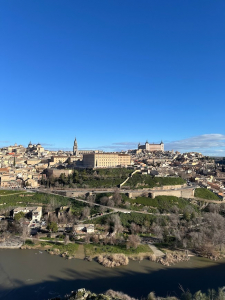
View of Toledo
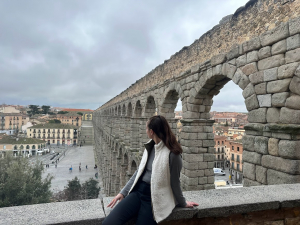
Los Aqueductos
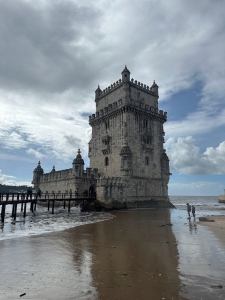
Tower of Belen
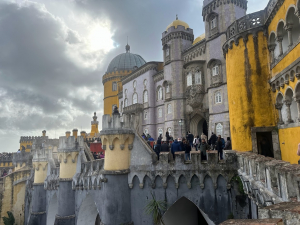
The Pena Palace
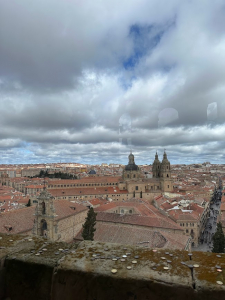
View in Salamanca

Sunset in Tenerife
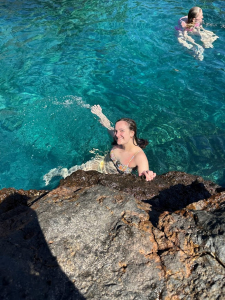
Natural pool in Tenerife
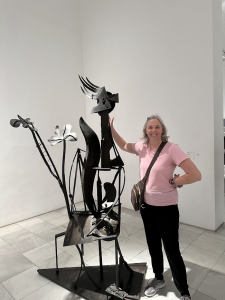
My mom loves Dali’s rooster
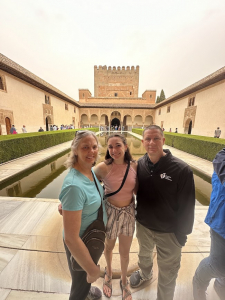
My family visited!
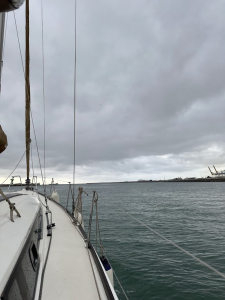
Barcelona cruise

Dali Museum- Abe Lincoln or a woman?
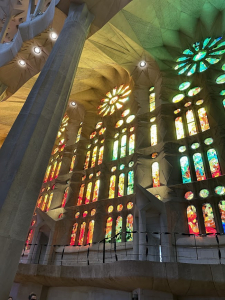
The windows at the Sagrada Familia
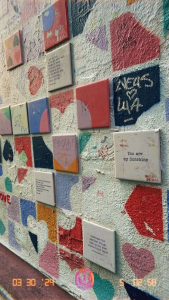
Positive notes in Dublin
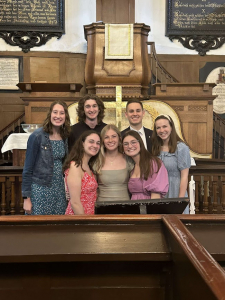
WELS connections in London
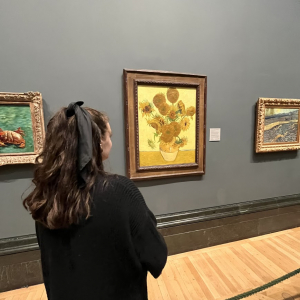
Van Gogh’s “Sunflowers”
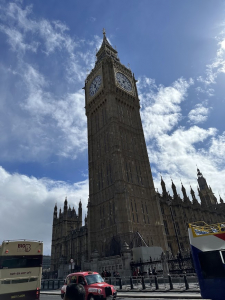
Big Ben
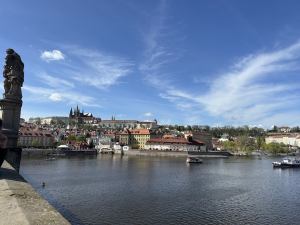
View of the river in Prague
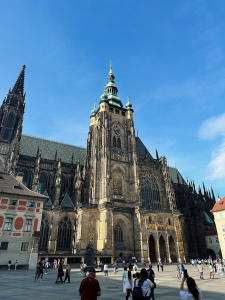
St. Vitus Cathedral
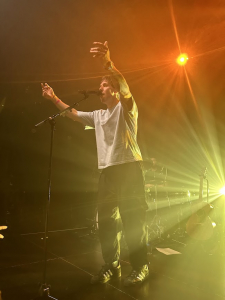
Jake Scott
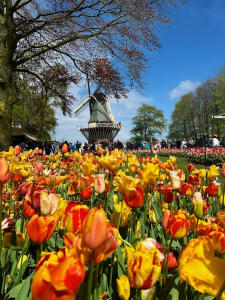
Windmill and tulips at Keukenhof
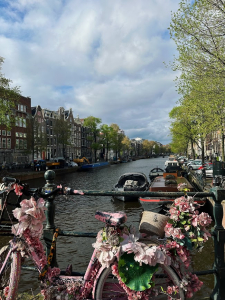
Amsterdam canal
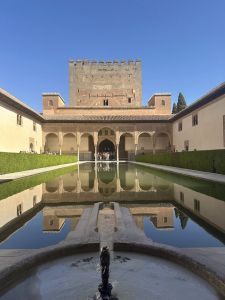
The Alhambra
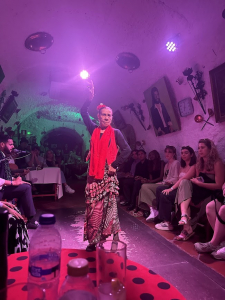
Flamenco show in a cave
